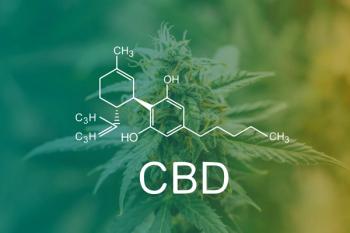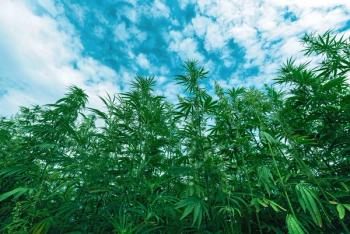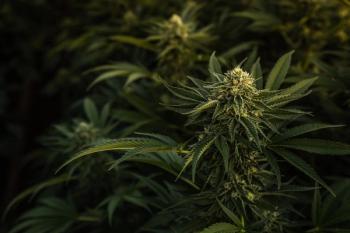
Cannabis Science and Technology
- January/February 2022
- Volume 5
- Issue 1
- Pages: 10-12
In Search of the Golden Potency Method

A discussion on the selection of a “golden” potency method including what this method should look like, how we should go about choosing it, and more.
Given the ongoing inter-laboratory variation problem in the cannabis industry, I have mentioned in previous columns the need for the selection of a “golden” potency method. In this column, I will discuss what this method should look like, how we should go about choosing it, and make a case for what I believe is the best chromatography-based potency method available.
The Myth of Accuracy in Cannabis Potency Measurements
In previous papers and columns, I have written about the problem of inter-laboratory variation, where sending the same cannabis sample to different laboratories gives significantly different results (1–3). I discussed the many causes of this problem, including lack of a standardized method, insufficient training, inconsistent oversight, and the lack of matrix reference materials (2). Matrix reference materials consist of the same matrix as the sample but contain known amounts of the analytes of interest. For example, a dried, ground hemp sample with known amounts of total tetrahydrocannabinol (THC) and total cannabidiol (CBD) would be an example of a matrix reference material. Recall that the definition of accuracy is how far away you are from the true value (4). For non-cannabis industries the US National Institutes of Standards and Technology (NIST) provides matrix reference materials. Although NIST is working on issuing cannabis matrix reference materials (5), they are years away from providing these materials, and the continued illegality of THC at the Federal level limits their ability to do certain things.
Given the lack of industry standard matrix reference materials, this means we have no cannabis potency true answer. This is why I contend that the concept of accuracy in cannabis potency analysis is a myth. What we can calculate is precision, which is a measure of the spread in a set of measurements (4). By performing reproducibility studies, a precision value can be used to ascertain the quality of a high performance liquid chromatography (HPLC) potency method, but it means one can only compare numbers obtained with that particular method to each other. Results obtained with different methods cannot be compared because again we have no true values to use as a basis for comparison.
In a previous column (3), I suggested a number of solutions to the inter-laboratory variation problem. One of these was the designation of a consensus HPLC potency method that I dubbed the “Golden Method” (6). The problem we are trying to solve here is given the lack of cannabis matrix reference materials and true answers, we need a consensus way of determining true values so we can legitimately compare results across methods and laboratories.
Ideally, some government regulatory body or industry organization would denote a specific HPLC instrument and cannabis potency method to be “Golden.” This instrument and method’s results would be considered the “true” value, and we would compare the quality of all other instruments and methods with respect to the golden instrument and method. Hopefully, allcannabis laboratories would adopt the Golden Method, which would go a long way towards alleviating the inter-laboratory variation problem. Alternatively, if a laboratory found their method gave systematic differences between their results and the Golden Method, they would simply correct their results to match those of the Golden Method. If appropriate matrix reference materials were available, laboratories would be free to use whatever potency method they like so long as it gave results consistent with the known values in matrix reference materials. Until this happens, I strongly urge the industry to adopt my Golden Method strategy.
What Would a Golden HPLC Potency Method Look Like?
By necessity samples injected into a chromatograph must be in liquid form. This presents a challenge for analyzing solid samples like cannabis biomass, hence the need to extract the analytes from solids. I have roamed the United States over the last 10 years visiting dozens of cannabis laboratories and observing how they perform their chromatographic potency analyses. The greatest variability I saw was in sample extraction. The sample size, grinding method, solvent, and mixing conditions all varied from laboratory to laboratory (6). This means even though a given extraction may give consistent results, variations of extraction methods across laboratories to different laboratories having extraction efficiencies. That is, each laboratory will extract a different amount of analyte from the same sample. No wonder then that different laboratories get different results on the same sample.
What is the solution to this problem? Strictly controlling grinding, mixing, solvent, and so on is one way, but there may be a simpler answer. Something that has always bothered me about chromatography extractions is that it is assumed that the extraction gets all the analyte out of the sample even though I rarely see data supporting this fact in the chromatographic literature. The only way we can know if all competing extraction methods extract the same amount of analyte from the same samples is to do side by side comparisons; that is, perform the needed experiments. This of course takes time, energy, and money, which I doubt the cannabis analysis community is willing to commit.
The only way we can ensure that all extraction methods have the same extraction efficiency is to use methods that extract to exhaustion. That is, extract until you know you have gotten all the analyte out of the sample. The purpose of any potency method is to tell you the chemical composition of the sample in your hand. By not using extraction methods that get all of the analyte out of the sample, you are guaranteeing that the result you obtain is not representative of the sample being analyzed. A given extraction method may give consistent results because it always pulls the same percentage of analyte out of a sample, but if you don’t know you are getting it all how can you say you have correctly determined what is actually in the sample?
How then do we extract to exhaustion? One way is to take a single sample, extract it multiple times, and then measure the potency of the extracts obtained. At some point the amount of analyte will go to zero, and that will tell you that you got it all. Then, an extraction based on these results must be developed. Only by making sure all extraction methods get out all the analytes all the time can we ensure that HPLC results truly reflect the composition of our sample. The extraction to exhaustion idea also simplifies things. Any extraction method that gets all the analyte out can be used, so laboratories are not forced to use a one size fits all approach.
Orthogonal Techniques as a Measure of Calibration Quality
Chromatographers are rightfully proud of quoting the accuracy of their cannabis potency calibrations, and some impressive results have been obtained (7–9). However, what many people don’t realize is that these calibrations are for pure cannabinoids in solution, and the accuracy of these calibrations tells us how well a method does on these idealized samples, but nothing on how well the method does on actual cannabis samples. This information is only available from matrix reference materials, which I have indicated do not yet exist for the cannabis industry.
Given that accuracy is a myth in cannabis potency analysis, how then do we compare HPLC potency methods to select the Golden Method? In analytical chemistry orthogonal methods are methods that perform the same analysis but are independent of each other. For example, gas chromatography (GC) and liquid chromatography are examples of orthogonal cannabis potency methods. Thus, results from orthogonal methods can be used as sanity checks on established analytical methods.
What orthogonal method should be used as a calibration check of HPLC cannabis potency methods? GC could be used, but my own experience has shown that since cannabinoids decarboxylate to a variable extent inside a GC, there are uncontrollable differences between HPLC and GC values on the same samples.
Ideally then the orthogonal method would have little or no sample preparation so this variable is removed from the method-to-method comparison of results. A technique that fits this bill is infrared (IR) spectroscopy (10). Despite the assertions of some misguided chromatographers, IR spectroscopy is quantitative and this has been known for more than 70 years (11). It has been shown that this technology accurately measures cannabinoids and terpenes in cannabis plant material (12–14), extracts (15,16), distillates (1), and tinctures (17). The beauty of IR spectroscopy is that when utilized with the attenuated total reflectance (ATR) sampling technique (10) there is no sample preparation for liquids such as cannabis extracts, distillates, and tinctures; and for dried biomass the only sample preparation needed is grinding (13,14). The point is that the sample does not need to be extracted for IR analysis, removing sample preparation variation from the analysis. Assuming IR spectroscopy is an independent and unbiased method compared to HPLC, it is a good choice as an orthogonal method to test the quality of different HPLC methods. Experimentally, this would involve measuring a series of samples on an HPLC, then by IR spectroscopy, and plotting the data versus each other to determine the quality of the correlation.
In unpublished work, I have use IR spectroscopy as an orthogonal method to test the quality of several different HPLC potency methods at laboratories across the US. I have found the best correlation between IR spectroscopy and HPLC using the method of Guise and colleagues originally published in the Journal of AOAC International in 2015 (7). I have used data from several laboratories running this method and measured the correlation between HPLC and IR data, and the Guise method has consistently produced the best results. I think this is due in part to the thorough extraction process they use. Based on these results, I strongly recommend the cannabis analysis industry adopt the Guise method as the Golden Method. Given that IR will always be faster, easier, and less expensive than IR, it would behoove the industry to choose a golden HPLC method, calibrate IR spectrometers with this method, and then use IR to measure potencies going forward.
What About Other HPLC Methods?
I realize that different entities including the Association of Official Analytical Chemists (AOAC) (18), American Society for Testing Materials (ASTM) (19), the American Herbal Pharmacopeia (AHP) (20), and the United States Pharmacopeia (USP) (21) have or are working on promulgating chromatography based cannabis potency methods. My concern here is that these methods are different from each other, and thus are bound to produce different results. The only way to harmonize these methods is to run a set of matrix reference materials by each method, materials that do not yet exist. Rather than waiting for these samples to come along, and wait for the harmonization of methods to take place, the industry should adopt the method of Guise as discussed above.
Conclusions
Inter-laboratory variation is a continuing problem in the cannabis analysis business. It is caused in part by a lack of appropriate matrix reference materials. Because of this, accuracy in cannabis potency analysis is a myth. A solution to this problem is for the industry to agree on using a consensus cannabis potency HPLC method I have dubbed the Golden Method. This method will provide us with “true” values until appropriate matrix reference materials are available. Orthogonal methods such as IR spectroscopy can be used in helping pick the Golden Method. Using this technology, I have found that the HPLC method of Guise and colleagues is the best, and I recommend the industry adopt this as the Golden Method for cannabis HPLC potency analysis.
References
- B.C. Smith, P. Lessard, and R. Pearson, Cannabis Science and Technology 2(1), 48-53 (2019).
- B.C. Smith, Cannabis Science and Technology 2(2), 12–17 (2019).
- B.C. Smith, Cannabis Science and Technology 2(3), 10–14 (2019).
- B.C. Smith, Cannabis Science and Technology 1(4), 12-16 (2018).
- NIST Tools for Cannabis Laboratory Quality Assurance | NIST,
https://www.nist.gov/programs-projects/nist-tools-cannabis-laboratory-quality-assurance . - B.C. Smith, Cannabis Science and Technology 3(2), 10–15 (2020).
- M.W. Giese, M.A. Lewis, L. Giese, and K.M. Smith, J. AOAC Int. 98(6), 1503 (2015).
- C. Giroud, CHIMIA Intl. Journal of Chemistry 56, 80 (2002).
- T. Ruppel and M. Kuffel, "Cannabis Analysis: Potency Testing Identification and Quantification of THC and CBD by GC/FID and GC/MS," PerkinElmer Application Note (2013).
- B.C. Smith, Fundamentals of Fourier Transform Infrared Spectroscopy, 2nd Ed. (CRC Press, Boca Raton, Florida, 2011).
- B.C. Smith, Quantitative Spectroscopy: Theory and Practice (Elsevier, Boston, Massachusetts, 2002).
- B.C. Smith, M. Lewis, and J. Mendez, “Optimization of Cannabis Grows Using Fourier Transform Mid-Infrared Spectroscopy,” PerkinElmer Application Note (2016)
- B. C. Smith, Cannabis Science and Technology 2(6), 10-14 (2019).
- B.C. Smith, Cannabis Science and Technology 3(6), 24–38 (2020)
- B.C. Smith, Terpenes and Testing, Jan.-Feb. 2018., Pg. 32.
- B.C. Smith, Terpenes and Testing, Nov.-Dec. 2017, pg. 48.
- B.C. Smith., C.A. Fucetola, K. Ehrmantraut, and T. Hagan, Terpenes & Testing, Sept./Oct. 2020, Pages 19-24.
- AOAC scientists approve Official Method of Analysis for cannabinoids in hemp - AOAC INTERNATIONAL,
https://www.aoac.org/news/aoac-scientists-approve-official-method-of-analysis-for-cannabinoids-in-hemp/ . - Cannabis Industry Standards & Best Practices | ASTM Cannabis,
https://www.astmcannabis.org/ . - AHP Monographs – Cannabis Inflorescence Quality Control Monograph – American Herbal Pharmacopoeia (
herbal-ahp.org ). - Cannabis for medical use (
usp.org ).
About the Columnist
Brian C. Smith, PhD, is Founder, CEO, and Chief Technical Officer of Big Sur Scientific. He is the inventor of the BSS series of patented mid-infrared based cannabis analyzers. Dr. Smith has done pioneering research and published numerous peer-reviewed papers on the application of mid-infrared spectroscopy to cannabis analysis, and sits on the editorial board of Cannabis Science and Technology. He has worked as a laboratory director for a cannabis extractor, as an analytical chemist for Waters Associates and PerkinElmer, and as an analytical instrument salesperson. He has more than 30 years of experience in chemical analysis and has written three books on the subject. Dr. Smith earned his PhD on physical chemistry from Dartmouth College.
Direct correspondence to:
How to Cite this Article
B. Smith, Cannabis Science and Technology 5(1), 10-12 (2022).
Articles in this issue
almost 4 years ago
How Are Tetrahydrocannabinol—THC—Isomers Entering the Market?almost 4 years ago
Cannabis Research Is Cannabis Sciencealmost 4 years ago
Autoflowering Genetics Present Unique Opportunitiesalmost 4 years ago
Mycology 101: Understanding Mold as a Threat in the Cannabis Industryalmost 4 years ago
How Does Carbon Dioxide Enrichment Affect Environmental Control?Newsletter
Unlock the latest breakthroughs in cannabis science—subscribe now to get expert insights, research, and industry updates delivered to your inbox.




